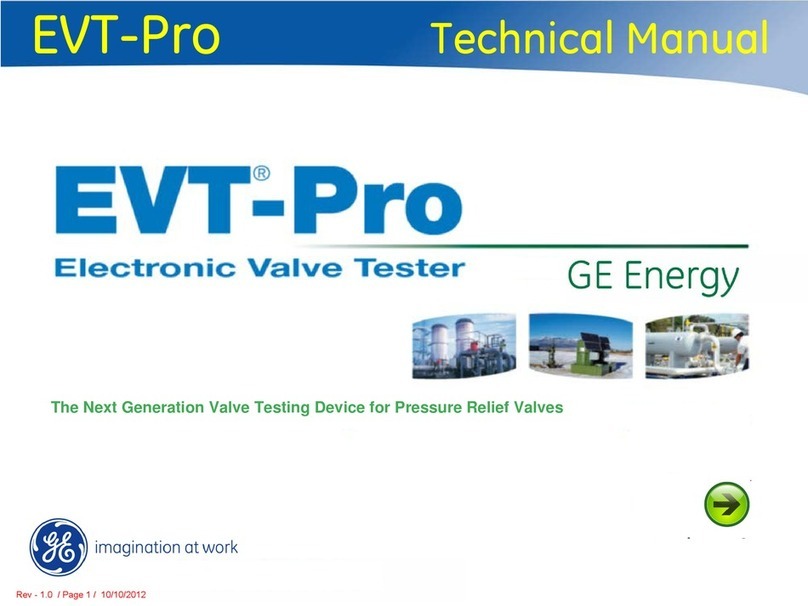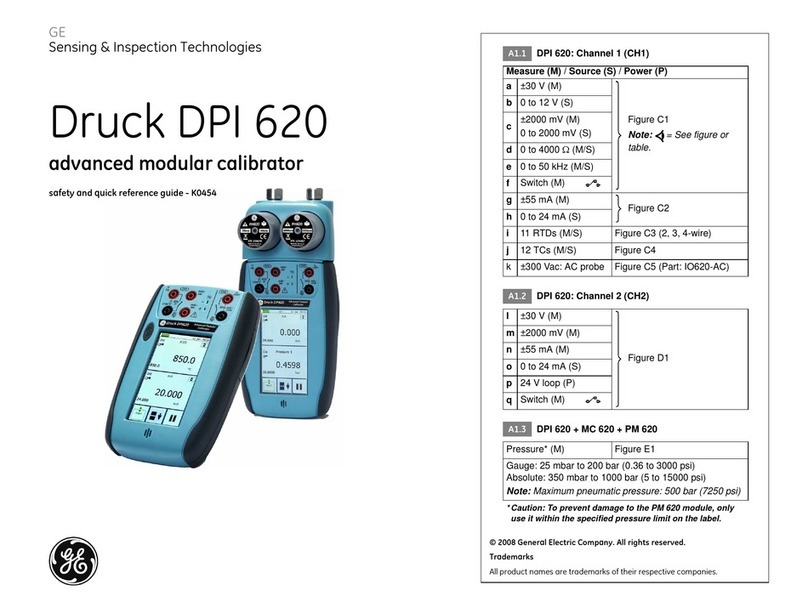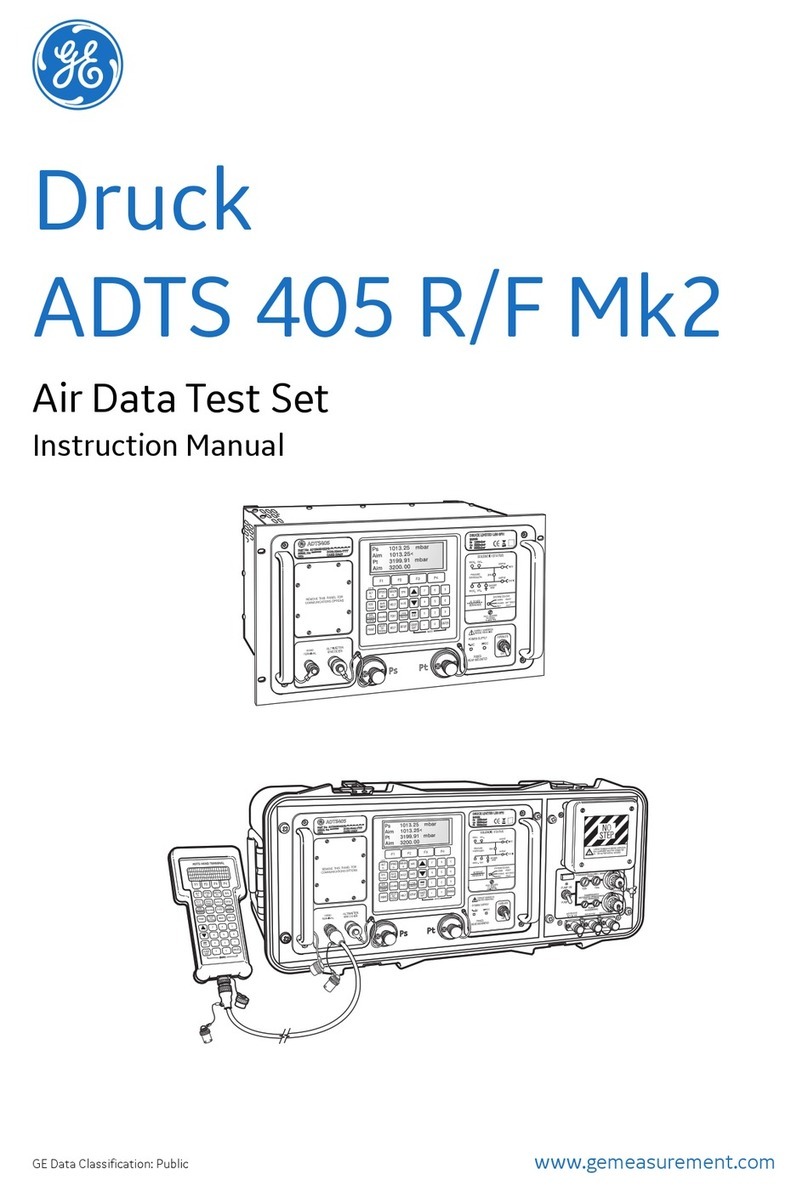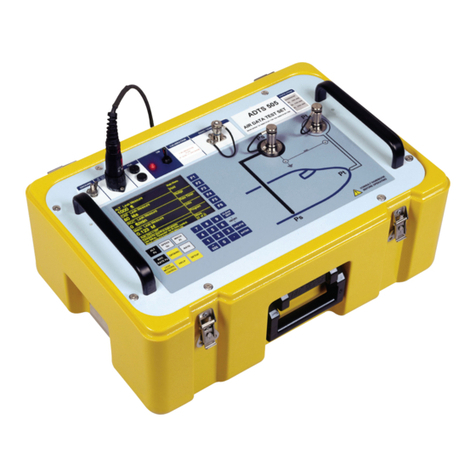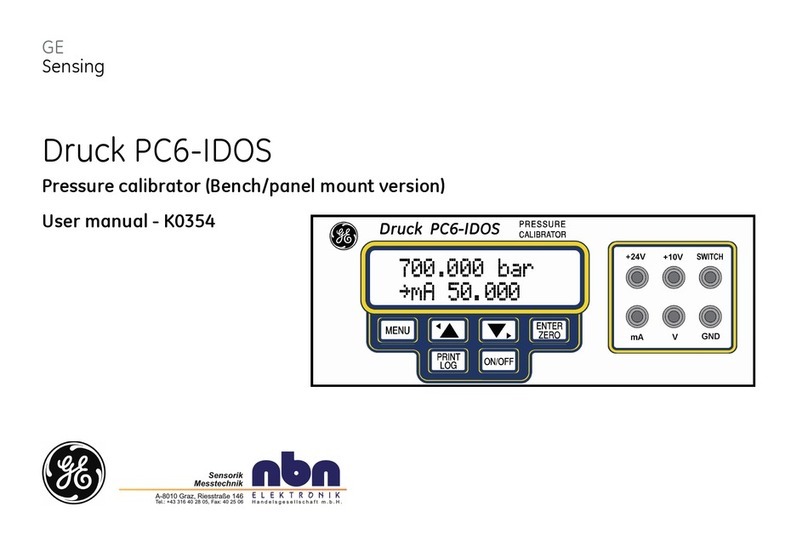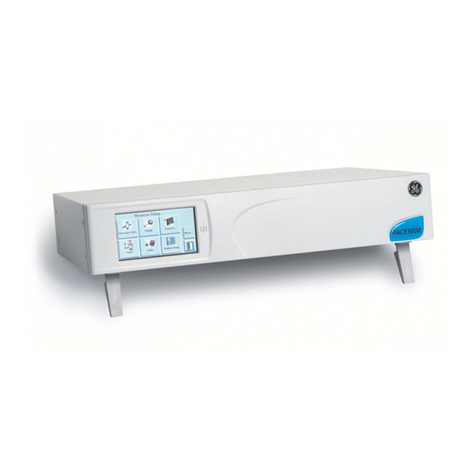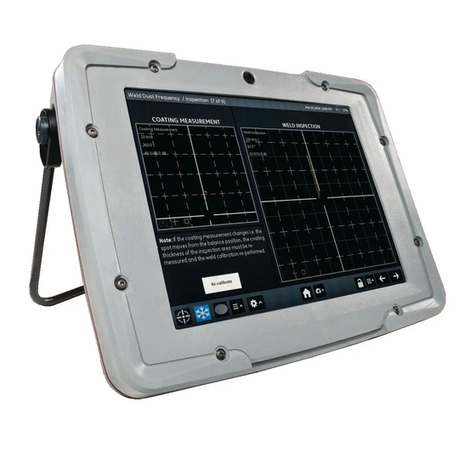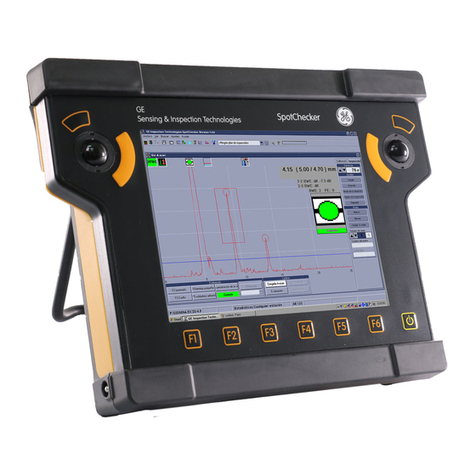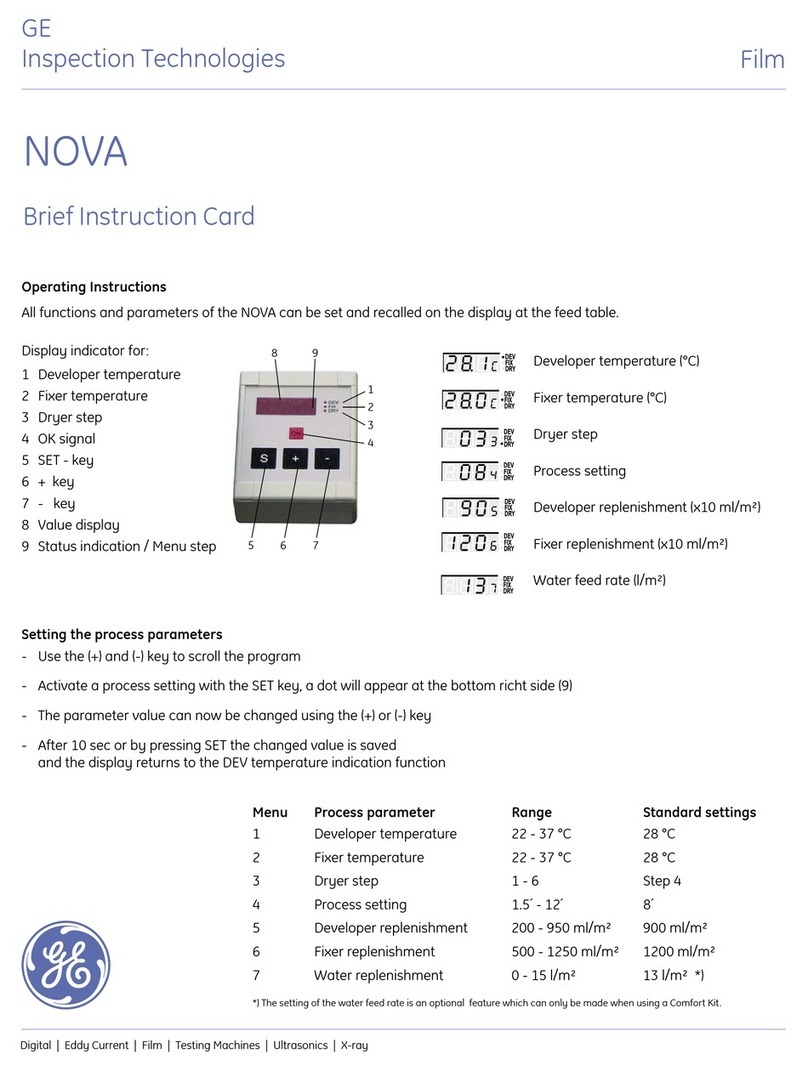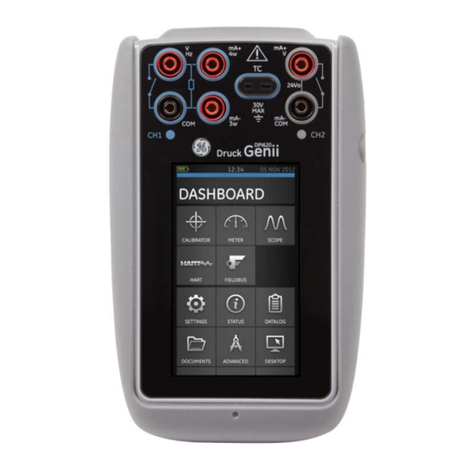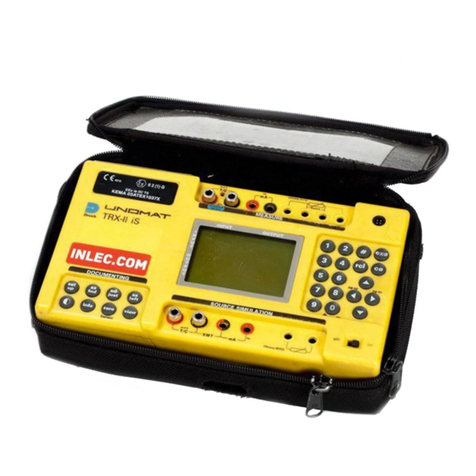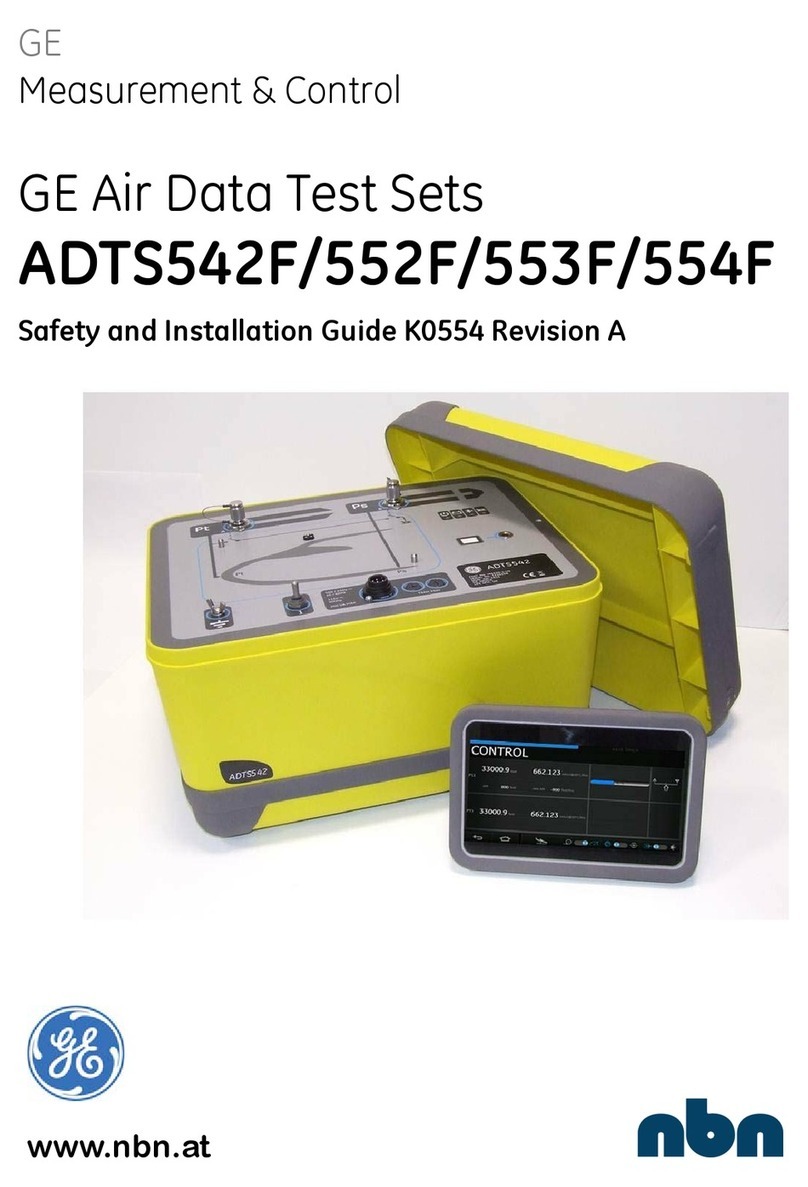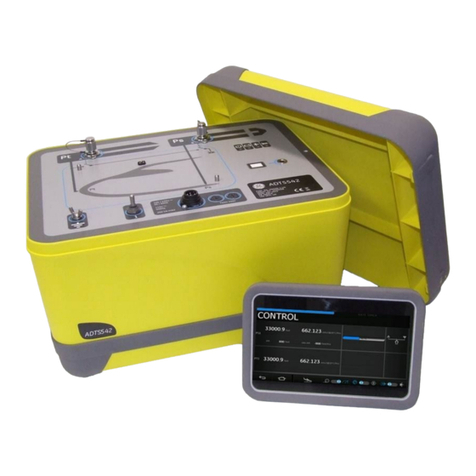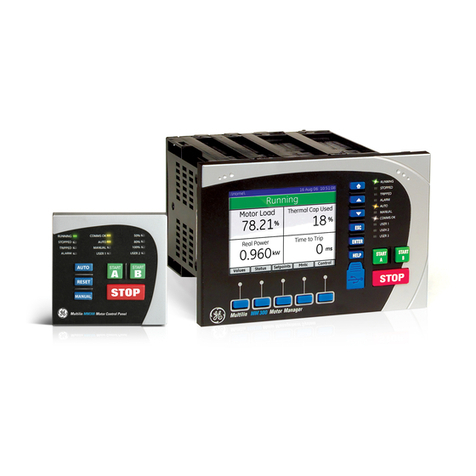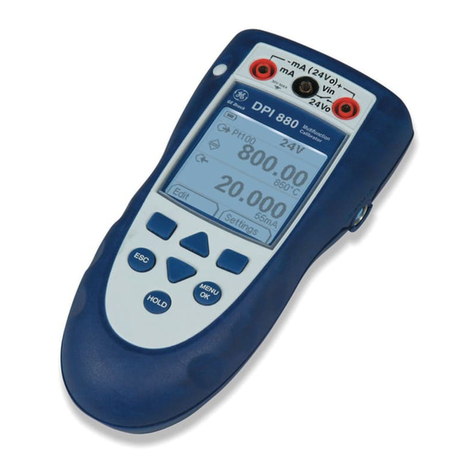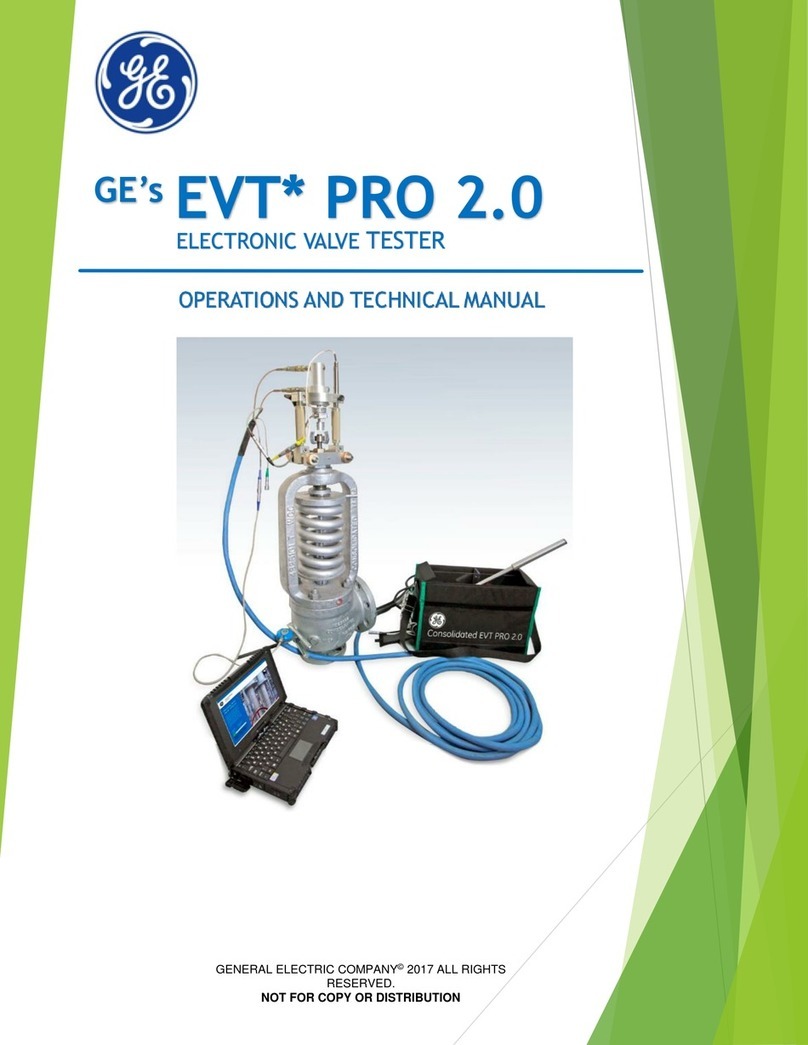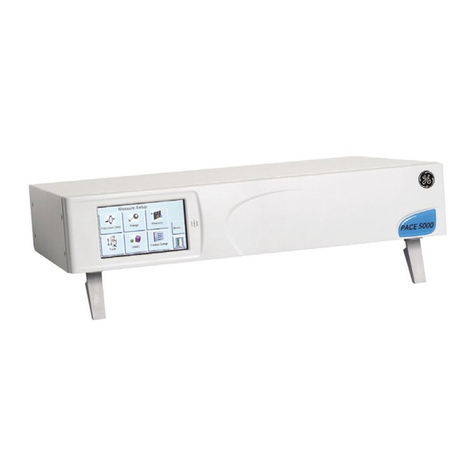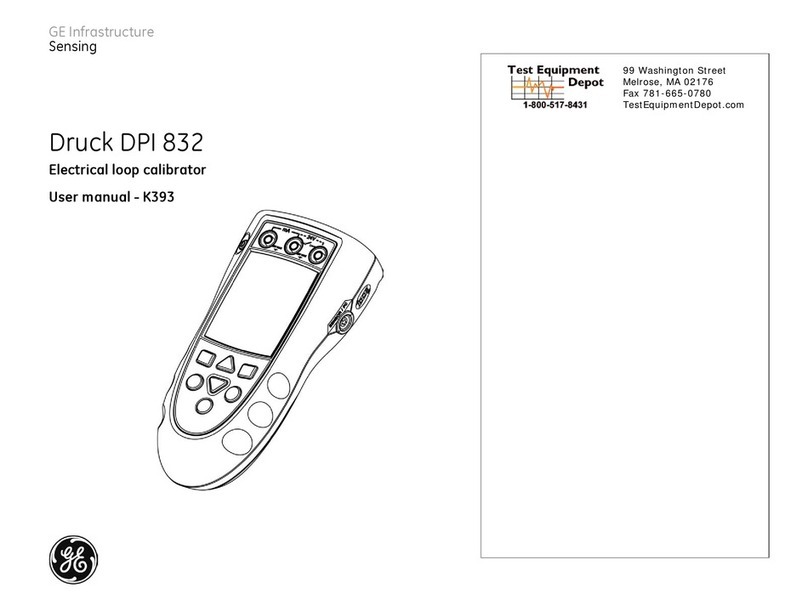
Druck ADTS 405 Service Manual
K171 Issue No. 1 Page 1-2
INTRODUCTION
1. There are two versions of the ADTS 405 a 19", 6U high (10½”) rack-mounted unit and a flight line
unit. The ADTS 405 is a rack-mounted system and, with external pressure and vacuum supplies
connected, provides measurement and control for sense and leak testing and functional tests of air
data instruments, components and systems. The ADTS 405F is a self-contained air data test system
providing complete pressure and vacuum measuring and control for on-aircraft sense and leak testing
and functional tests of air data instruments, components and systems. The unit comprises an
electronics rack and pump rack enclosed in a high density, polyethylene case.
2. The user interface for the rack-mounted version is a front panel keyboard and display with a
hand terminal as an option. For the ADTS 405F version the hand terminal is the supplied user interface
with the front panel keypad and display as an option. The ADTS 405 can also be controlled by a
computer (PC) using the front or rear panel IEEE 488 communications interface. The front panel
contains the operate switch and the mimic panel with LED indicators showing the operation of the two
pneumatic channels.
3. The pump rack, on the ADTS 405F, produces pressure and vacuum supplies for the electronics
rack and for external connectors. Located on the front panel, the external connectors provide for
external pressure and vacuum supplies (EXT PRESSURE and EXT VACUUM) and an auxiliary static
(vacuum) output (AUX). The auxiliary static output provides vacuum for suction-type static adaptors.
The rack is cooled by a fan located under a protective cover on the front panel. The power supply
connection for the ADTS 405F is located on the front panel.
4. The ADTS 405 can display and operate in either units of pressure measurement or aeronautical
units. The rate that the pressure changes to a new set-point can be set. The rate is then reduced as
the set-point is achieved and maintained, without overshoot. A `ground' facility automatically and
safely controls both channels to atmospheric pressure at the previously entered rates of change and
then informs the user when both channels are safely at `ground'.













